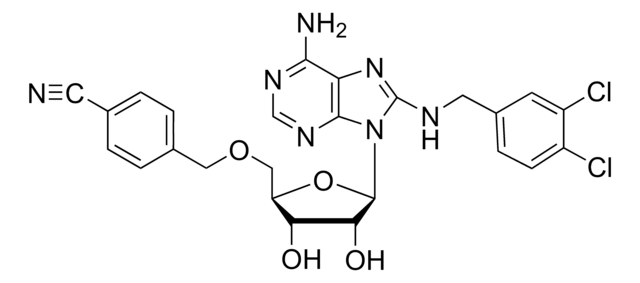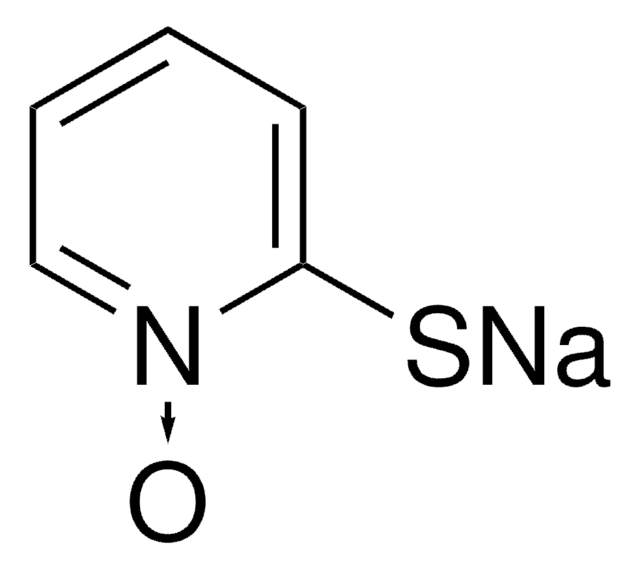P4413
N,N,N′,N′-Tetrakis(2-pyridylmethyl)ethylenediamine
≥98% (TLC), powder, membrane-permeable zinc chelator
Synonym(s):
TPEN
About This Item
Recommended Products
product name
N,N,N′,N′-Tetrakis(2-pyridylmethyl)ethylenediamine,
form
powder
SMILES string
C(CN(Cc1ccccn1)Cc2ccccn2)N(Cc3ccccn3)Cc4ccccn4
InChI
1S/C26H28N6/c1-5-13-27-23(9-1)19-31(20-24-10-2-6-14-28-24)17-18-32(21-25-11-3-7-15-29-25)22-26-12-4-8-16-30-26/h1-16H,17-22H2
InChI key
CVRXLMUYFMERMJ-UHFFFAOYSA-N
Looking for similar products? Visit Product Comparison Guide
Related Categories
Application
- in the treatment of human embryonic kidney (HEK293T) cells for assessing its effect on the Jembrana disease virus (JDV) viral infectivity factor (Vif) functionality
- in P19 embryonic carcinoma cells for chelation of zinc ions released during apoptosis
- to evaluate its effect on lentiviral Vpx infection on human monocytic THP-1 cells
Biochem/physiol Actions
Features and Benefits
Storage Class Code
11 - Combustible Solids
WGK
WGK 3
Flash Point(F)
Not applicable
Flash Point(C)
Not applicable
Personal Protective Equipment
Certificates of Analysis (COA)
Search for Certificates of Analysis (COA) by entering the products Lot/Batch Number. Lot and Batch Numbers can be found on a product’s label following the words ‘Lot’ or ‘Batch’.
Already Own This Product?
Find documentation for the products that you have recently purchased in the Document Library.
Customers Also Viewed
Articles
Cell cycle phases (G1, S, G2, M) regulate cell growth, DNA replication, and division in proliferating cells.
Apoptosis regulation involves multiple pathways and molecules for cellular homeostasis.
Our team of scientists has experience in all areas of research including Life Science, Material Science, Chemical Synthesis, Chromatography, Analytical and many others.
Contact Technical Service











